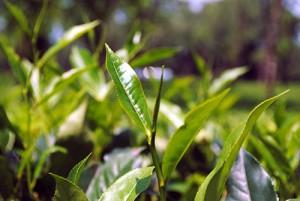Living on the tiny island of Singapore, traveling is one of those topics that frequently pop up when we make small talk.
“Where did you go for the long weekends?”
“Going anywhere for the holidays?” and so on.
Our national fascination with traveling is never more evident than in travel fairs where hoards form outside exhibition halls, queuing for hours just to be the first in line for those ‘exclusive deals’.
There are 2 main types of packages offered- guided tour packages and free and easy packages.
At first glance, guided tour packages offer better value- travel 4 countries in 12 days, see 8 cities in France, Italy, Belgium and Switzerland; an itinerary that leaves you breathless just reading it, let alone going through it.
Seasoned travelers though often prefer free and easy packages, visiting just one or two cities within the same time span, rather than halfway across Europe.
If you had been to or rather through Europe in one of those whirlwind packages, would you say “Nah, I will pass on Paris ‘cos I have already been there.”?
The Tea Tourist?
Often tea drinkers commit the equivalent of believing they already experienced Paris just because they have been to the Eiffel Tower or the Louvre.

This is the equivalent of turning down a trip to New York just because you have seen the Statue of Liberty.
On more than one occasion I heard seasoned tea drinkers- and not just casual yellow label sippers- remark “I never knew Tieguanyin tastes like this” after trying it. And it a trumpet tooting manner, I will add rather non-superfluously that the statement was intended to be complimentary.:)
Disparity in Quality
Staying on the example of Tieguanyin, let us use price to illustrate the gulf. Not that price is always a precise indicator but if 1 Tieguanyin can be sold for 10-20 times the price of another to connoisseurs- assuming the market is not stupid- it is safe to say there is a difference.
Here is just a smattering of what could affect the quality of Tieguanyin from the same farm and factory on the same day:
i) Time of the day it was picked
ii) Whether it was raining when the leaves were picked
iii) Growth of tea leaf
iv) Whether tea leaf has been damaged before harvest- e.g. pests
v) Whether tea leaf has been damaged during harvesting- e.g. machine harvested
vi) Whether tea leaf has been damaged during production- e.g. over-baked
vii) Whether tea leaf has been processed properly- e.g. complete ‘shaqing’ to halt oxidation
Bear in mind this is for tea leaves that we already narrowed down to the same farm and factory hence eliminating these other variables:
i) Terroir which has a rather comprehensive scope including soil, elevation, climate, surround shrubbery and so forth

iii) Harvest season- i.e. generally Spring>Autumn>Summer
iv) Harvest date within the same season- i.e. for green tea Pre-Qing Ming>Pre Harvest Rain> ‘Normal Spring’ (exceptions apply)
v) Prevailing weather condition
All of these mainly deal with quality alone and we have not gotten to style.
Production Style
‘Style’ is one of those words that mean all things to all men, even in tea, to avoid confusion I would define it in this case as a combination of
- The equipment employed by the producer- i.e. baking cage, oven, charcoal basket etc
- Level of oxidation in the case of oolong tea
- The method employed in various stages- e.g. rattling with a basket, tumbling in a machine, stirring by hand etc (these are methods used in ‘zuo qing’ (做青) stage of producing oolong tea)
- The intensity and length- e.g. how long it is baked, what temperature, how many times it is baked etc
Though I am admittedly biased, this is where oolong tea really shines- by varying the ‘zuo qing’ and drying stages, a huge range of flavors can be produced.
This is while keeping the same production area and cultivar constant.
Take our Guanyin Wang for example.
After the producer had provided the raw materials- we worked together to craft the final baking or rather re-baking level.
The longer baking time would result in a smoother texture but at the expense of the aroma.
Hence it was a matter of personal preference or perceived preference of target market that would affect the final product. All of which would fall under the ‘Tieguanyin’ banner.
The Finished Product
The 2 points above would account for the disparity in the dry leaves produced but tea is hardly (if ever) consumed as a dry leaf. Our enjoyment of tea is derived from the steeped tea- the liquid tea if you will.
As I mentioned in this article about the weakest link, tea is more than just the quality of tea leaves but a combination of a number of factors.
Often we don’t enjoy a particular tea as much as we ought to because the brewing method employed did not bring out the best in the leaves.
This subject though is what we will cover in our next post.
See here for more articles related to tea appreciation.
Note: Both images downloaded from sxc.hu free stock images
